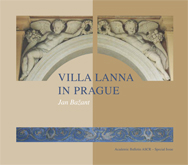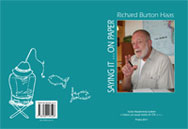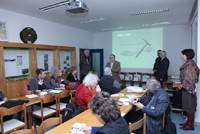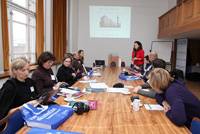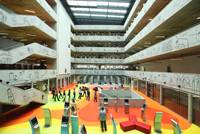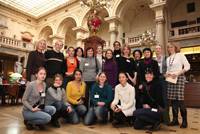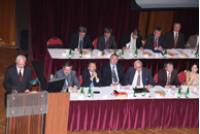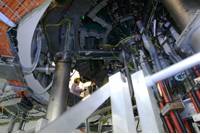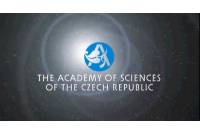The BIOCEV Center opened
20 Dec 2015
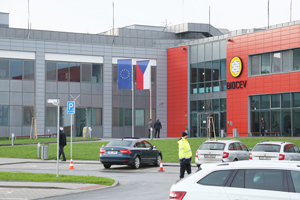 In the presence of Deputy Minister of Education, Youth and Sports, Stanislav Štech, Rector of Charles University Tomáš Zima, Vice-President of the Academy of Sciences of the Czech Republic, Vladimír Mareček, and other important guests, the implementation phase of the BIOCEV project – the Biotechnology and Biomedicine Center of the Academy of Sciences of the Czech Republic and Charles University in Vestec ended December 18, 2015. Full operation is planned beginning January 2016. BIOCEV is currently made up of the implementation of five research programmes and the operation of six sets of research infrastructure and service laboratories. By 2020, as many as 450 researchers, including 200 post-graduate students, are supposed to work at the BIOCEV Center. The Center’s objective is to learn details about organisms at the molecular level that will be used in applied research and in the development of new therapeutic procedures.
In the presence of Deputy Minister of Education, Youth and Sports, Stanislav Štech, Rector of Charles University Tomáš Zima, Vice-President of the Academy of Sciences of the Czech Republic, Vladimír Mareček, and other important guests, the implementation phase of the BIOCEV project – the Biotechnology and Biomedicine Center of the Academy of Sciences of the Czech Republic and Charles University in Vestec ended December 18, 2015. Full operation is planned beginning January 2016. BIOCEV is currently made up of the implementation of five research programmes and the operation of six sets of research infrastructure and service laboratories. By 2020, as many as 450 researchers, including 200 post-graduate students, are supposed to work at the BIOCEV Center. The Center’s objective is to learn details about organisms at the molecular level that will be used in applied research and in the development of new therapeutic procedures.
The Czech Academy of Sciences 2014-2015: Selected Research Results
20 Oct 2015
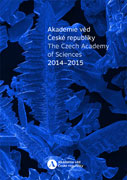 The Czech Academy of Sciences has issued a report accounting selected research results achieved by its scientific institutes in all research areas in 2014 and in early 2015. It outlines its research activities, as well as goals of the new research centres and facilities of the CAS and its new Strategy AV21, the main aim of which is to perform top level multilateral interdisciplinary research reflecting the needs of contemporary society. The book (printed version in PDF) documents the CAS´s efforts to transfer research findings into practical outputs and its co-operation with partners in the industrial sphere, it presents the CAS´s co-operation with various institutions on international, regional and local levels and mentions some of the major social events and anniversaries marked by the CAS in 2014 and 2015.
The Czech Academy of Sciences has issued a report accounting selected research results achieved by its scientific institutes in all research areas in 2014 and in early 2015. It outlines its research activities, as well as goals of the new research centres and facilities of the CAS and its new Strategy AV21, the main aim of which is to perform top level multilateral interdisciplinary research reflecting the needs of contemporary society. The book (printed version in PDF) documents the CAS´s efforts to transfer research findings into practical outputs and its co-operation with partners in the industrial sphere, it presents the CAS´s co-operation with various institutions on international, regional and local levels and mentions some of the major social events and anniversaries marked by the CAS in 2014 and 2015.
Conference "Gender Mainstreaming in STEM and Global Change Sciences"
14 Oct 2015
![]() On the 14th and 15th October 2015 Global Change Research Centre will host an international conference called "Gender Mainstreaming in STEM and Global Change Sciences' (STEM – science, technology, engineering and mathematics). The conference, which is one of the events within a project of FP7 – EGERA, will feature international experts in the field of equal opportunities in science and research. More information here.
On the 14th and 15th October 2015 Global Change Research Centre will host an international conference called "Gender Mainstreaming in STEM and Global Change Sciences' (STEM – science, technology, engineering and mathematics). The conference, which is one of the events within a project of FP7 – EGERA, will feature international experts in the field of equal opportunities in science and research. More information here.
F4E and Siemens collaborate to develop powerful heating system for ITER
14 Oct 2015
 ITER will be the biggest-ever fusion device generating a plasma whose volume will be close to 840 m3 at 150 million ˚ C, ten times the temperatures at the core of the sun. To achieve these temperatures we would need powerful heating systems using high-energy beams, in order to push together the nuclei and trigger off a fusion reaction.
ITER will be the biggest-ever fusion device generating a plasma whose volume will be close to 840 m3 at 150 million ˚ C, ten times the temperatures at the core of the sun. To achieve these temperatures we would need powerful heating systems using high-energy beams, in order to push together the nuclei and trigger off a fusion reaction.
F4E, the European Union organisation managing Europe’s contribution to ITER, and Siemens, the global powerhouse operating in more than 200 countries, have started to collaborate on the development of three units of equipment that will host power supplies, whose requirements go beyond present industrial practices, as part of the ITER Neutral Beam Injectors (NBI), one of the ITER heating systems. One unit will be manufactured for a research facility operating in Italy, whose aim is to help scientists test the NBI components before they go into production mode for ITER. The other two units will be manufactured as part of the ITER powerful NBI system, designed to deliver 33 MW of power in order to inject neutral particles to the core its super-hot plasma. The works are expected to last seven years and their overall value will be in the range of 18 million EUR. Pietro Barabaschi, F4E acting Director, explained that “through this collaboration, a European global innovator will contribute to the largest international collaboration that is expected to influence the future energy mix”. Michael Krohn, Project Manager for High Voltage Decks and High Voltage Bushings at Siemens, stated that “our company is proud to be part of this international research project and to play an active role in the construction of units for the ITER Neutral Beam Injectors. We look forward to a fruitful collaboration”.
ATLAS and CMS experiments shed light on Higgs properties
1 Sep 2015
Three years after the announcement of the discovery of a new particle, the so-called Higgs boson, the ATLAS and CMS Collaborations present for the first time combined measurements of many of its properties, at the third annual Large Hadron Collider Physics Conference (LHCP 2015). By combining their analyses of the data collected in 2011 and 2012, ATLAS and CMS draw the sharpest picture yet of this novel boson. The new results provide in particular the best precision on its production and decay and on how it interacts with other particles. All of the measured properties are in agreement with the predictions of the Standard Model and will become the reference for new analyses in the coming months, enabling the search for new physics phenomena. This follows the best measurement of the mass of the Higgs boson, published in May 2015 after a combined analysis by the two collaborations.
For the first time ever: Protons accelerated in the plasma produced from hydrogen ice by a laser
27 Aug 2015
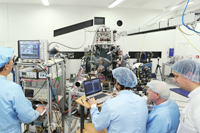 High-energy protons find application in medicine for irradiation of tumors as well as in many other science and technology fields (such as proton radiography). Very efficient acceleration of protons occurs in the hot plasma produced by a high-power laser beam focused on a target containing hydrogen. The thicker the target and the more hydrogen in it, the more accelerated protons. The ideal would be to have a laser target of pure hydrogen frozen into a solid state at temperatures as low as -261°C.
High-energy protons find application in medicine for irradiation of tumors as well as in many other science and technology fields (such as proton radiography). Very efficient acceleration of protons occurs in the hot plasma produced by a high-power laser beam focused on a target containing hydrogen. The thicker the target and the more hydrogen in it, the more accelerated protons. The ideal would be to have a laser target of pure hydrogen frozen into a solid state at temperatures as low as -261°C.
Computation neuroscience meeting in Prague
26 Aug 2015
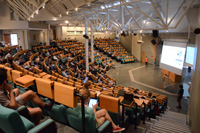 From July 18 to 23, the Prague City welcomed the 2015 Annual Computational Neuroscience Meeting. One of the organizers was the Institute of Physiology CAS.
From July 18 to 23, the Prague City welcomed the 2015 Annual Computational Neuroscience Meeting. One of the organizers was the Institute of Physiology CAS.
The purpose of the Organization for Computational Neurosciences is to create a scientific and educational forum for students, scientists, other professionals and the general public to learn about, to share, to contribute to, and to advance the state of knowledge in computational neuroscience.
Call for TV programmes or New Media productions
19 Jun 2015
The organizers of the The 2015 Science TV and New Media Festival are pleased to announce the Call for TV programmes or New Media productions for the 2015 European Science TV and New Media Festival and Awards. There is a significant expansion of the agenda this year and a change of format, with the festival and awards now combined as a single three day event in Lisbon, Portugal, from 23 to 25 November 2015. The venue will be the celebrated Sao Jorge theatre in the centre of Lisbon. There will be ten awards decided in Lisbon, and two further awards relating to young people and education decided by specific audiences Europe-wide, all listed below. The screenings will be complemented by panel led discussions and keynote talks on themes relating to Science and the TV/AV media. This year there will also be discussions after each screening of the productions shortlisted by the international jury. The Awards will be presented in Lisbon in a special evening on the third day of the event at the Jorge Theatre in central Lisbon, on 25 November.The deadline for entries is the end of June 2015. All entries must include a filled-in entry form and (apart from interactive video) a DVD. More information on http://europaws.org/.
ERC celebrates 5,000th top researcher funded
17 Jun 2015
Eight years after its launch, the European Research Council (ERC) is celebrating a significant milestone: the funding of its 5,000th researcher. To mark this occasion, a debate in the European Parliament and a symbolic awarding of the grant took place June 16, 2015 in Brussels. The 5000th grantee, Dr Iva Tolić, is a leading Croatian cell biophysicist. An ERC Consolidator Grant will allow her to study the forces acting on the chromosomes during cell division. Her research could be critical for the development of new therapies against cancer. Dr Tolić will carry out her project at the Ruđer Bošković Institute in Zagreb. After receiving the news, she commented: "This ERC grant will make a big difference to me professionally. It will allow me to establish my new lab in Croatia, hire six team members and buy a state-of-the-art microscope. For the next five years, I will be able to focus purely on my research. I am very happy to be the 5000th ERC grantee."
SYRIA – From Crony Capitalism to War Economy
16 Jun 2015
 Oriental Institute of the Czech Academy of Sciences cordially invites you to a lecture on SYRIA – From Crony Capitalism to War Economy: The Economic Roots of the Current Crisis by Akram Kachee (Sciences Po, Lyon) on 23 June, 2015, 13:00–14:30 in Oriental Institute in Prague. Akram Kachee is an associate researcher in political science, GREMMO, France. His specialization is the Middle East and especially Syria, economy of war, and political opposition movements in Syria.
Oriental Institute of the Czech Academy of Sciences cordially invites you to a lecture on SYRIA – From Crony Capitalism to War Economy: The Economic Roots of the Current Crisis by Akram Kachee (Sciences Po, Lyon) on 23 June, 2015, 13:00–14:30 in Oriental Institute in Prague. Akram Kachee is an associate researcher in political science, GREMMO, France. His specialization is the Middle East and especially Syria, economy of war, and political opposition movements in Syria.
“The economic issues are crucial to our understanding of both the causes of the civil war in Syria and the functioning of the society since the conflict has begun. In order to get a better sense of the events in Syria, this presentation will show how the pre–2011 economic system forms a part of the genesis of the conflict while identifying actors and dynamics of the war economy.”


 Česky
Česky



